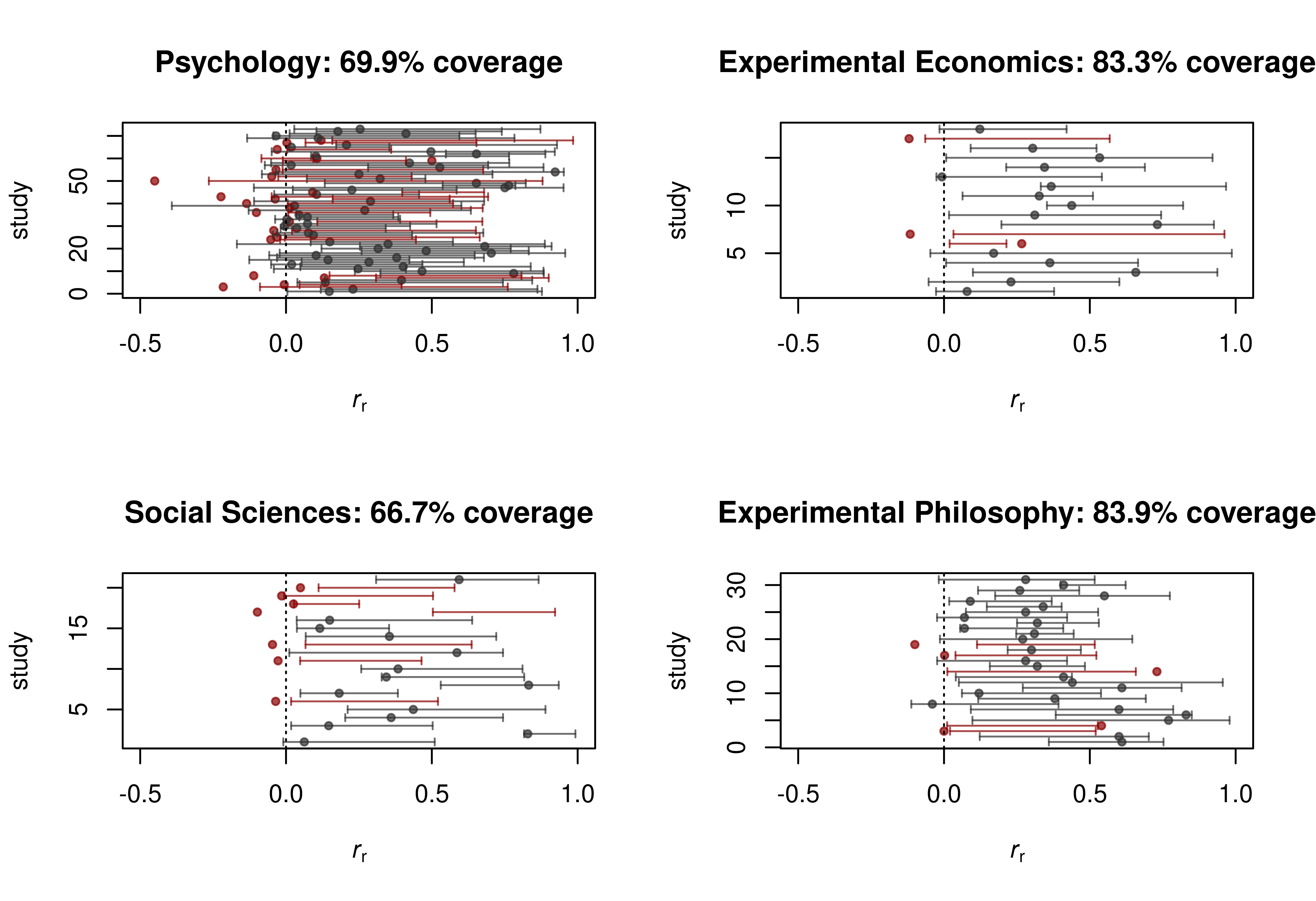Prediction interval for effect estimate of replication study
Source:R/predictionInterval.R
predictionInterval.RdComputes a prediction interval for the effect estimate of the replication study.
predictionInterval(
thetao,
seo,
ser,
tau = 0,
conf.level = 0.95,
designPrior = "predictive"
)Arguments
- thetao
Numeric vector of effect estimates from original studies.
- seo
Numeric vector of standard errors of the original effect estimates.
- ser
Numeric vector of standard errors of the replication effect estimates.
- tau
Between-study heterogeneity standard error. Default is
0(no heterogeneity). Is only taken into account whendesignPrioris "predictive" or "EB".- conf.level
The confidence level of the prediction intervals. Default is 0.95.
- designPrior
Either "predictive" (default), "conditional", or "EB". If "EB", the contribution of the original study to the predictive distribution is shrunken towards zero based on the evidence in the original study (with empirical Bayes).
Value
A data frame with the following columns
- lower
Lower limit of prediction interval,
- mean
Mean of predictive distribution,
- upper
Upper limit of prediction interval.
Details
This function computes a prediction interval and a mean estimate under a
specified predictive distribution of the replication effect estimate. Setting
designPrior = "conditional" is not recommended since this ignores the
uncertainty of the original effect estimate. See Patil, Peng, and Leek (2016)
and Pawel and Held (2020) for details.
predictionInterval is the vectorized version of .predictionInterval_.
Vectorize is used to vectorize the function.
References
Patil, P., Peng, R. D., Leek, J. T. (2016). What should researchers expect when they replicate studies? A statistical view of replicability in psychological science. Perspectives on Psychological Science, 11, 539-544. doi:10.1177/1745691616646366
Pawel, S., Held, L. (2020). Probabilistic forecasting of replication studies. PLOS ONE. 15, e0231416. doi:10.1371/journal.pone.0231416
Examples
predictionInterval(thetao = c(1.5, 2, 5), seo = 1, ser = 0.5, designPrior = "EB")
#> lower mean upper
#> 1 -0.9257882 0.8333333 2.592455
#> 2 -0.4599640 1.5000000 3.459964
#> 3 2.6440396 4.8000000 6.955960
# compute prediction intervals for replication projects
data("RProjects", package = "ReplicationSuccess")
parOld <- par(mfrow = c(2, 2))
for (p in unique(RProjects$project)) {
data_project <- subset(RProjects, project == p)
PI <- predictionInterval(thetao = data_project$fiso, seo = data_project$se_fiso,
ser = data_project$se_fisr)
PI <- tanh(PI) # transforming back to correlation scale
within <- (data_project$rr < PI$upper) & (data_project$rr > PI$lower)
coverage <- mean(within)
color <- ifelse(within == TRUE, "#333333B3", "#8B0000B3")
study <- seq(1, nrow(data_project))
plot(data_project$rr, study, col = color, pch = 20,
xlim = c(-0.5, 1), xlab = expression(italic(r)[r]),
main = paste0(p, ": ", round(coverage*100, 1), "% coverage"))
arrows(PI$lower, study, PI$upper, study, length = 0.02, angle = 90,
code = 3, col = color)
abline(v = 0, lty = 3)
}
 par(parOld)
par(parOld)